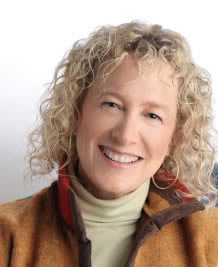 From the hectic holidays of December, we move into the goal-setting days of January, of making one New Year’s resolution after another. We pile on the lists, the must-dos, the changes we plan to make. Run five miles. Eat 1500 calories. Finish that revision.
From the hectic holidays of December, we move into the goal-setting days of January, of making one New Year’s resolution after another. We pile on the lists, the must-dos, the changes we plan to make. Run five miles. Eat 1500 calories. Finish that revision.
But this week is the week resolutions die, or at least this is what a Wall Street Journal’s Personal Journal headline and article proclaimed this past Tuesday. “People with the noble New Year’s resolution–in this case, to work out or work out more–should mark their calendars: That resolve starts to waver in the third week in January, data shows.”
Apparently, 25 days isn’t enough to soften our hearts–to paraphrase the language of Parshat Bo, this week’s parsha–to allow us to change our habits, before we revert back to type, to our ingrained ways. It takes about 66 days to form a habit, says a 2009 study by researchers at University College London.
In Bo, Pharaoh had clearly gotten into the habit of refusing the Jews’ request to leave Egypt. Six plagues into it, he was still at “no,” when God intervened, hardening Pharaoh’s heart and further entrenching him along the path he had already taken. As Erich Fromm said in You Shall Be as Gods, “Every evil act tends to harden man’s heart, that is, to deaden it…The more man’s heart hardens, the less freedom he has to change; the more is he determined already by previous actions.”
In our lives, are we really so unlike Pharaoh? Our set ways may not perpetrate evil, as Pharaoh’s did by continuing slavery, but they may stand in the way of societal change, or our personal growth. Commentator Irwin Keller in his blog Itzik’s Well, argues that indeed, our hearts do share something with Pharaoh’s. As did Pharaoh, we feel how difficult it is to acknowledge when we’re wrong, to change. We know, for example, how our cars and air conditioners poison the environment. When future generations say, “They must have known it was wrong; why didn’t they stop,” we will have no defense, unless we believe that God has hardened our hearts as he did to Pharaoh.
But Pharaoh did change, reluctantly, and so can we. And we can do it, Keller says, without suffering “the plagues or wars or disasters or other retributions that will change us by force.”
That doesn’t mean it’s easy. And that’s what the WSJ article was saying. Change doesn’t come about by wishful thinking, vague intentions, inchoate New Year’s resolutions.
Referring to getting in shape but applicable well beyond that, the WSJ article said that setting a specific goal is more effective than a vague vow to work out more. One strategy, according to a psychologist quoted, is to create plans specifying when, where and how you will take action. An example, he says, is thinking, “After I have my cup of coffee every Saturday morning, I will put on my shoes and go running.” What we find when we act specifically and intentionally, the article says, is that it’s no longer you who controls the behavior. The situation triggers the action.
Doing creates the change. As a drash in aish.com said, “The outward action brings the inner appreciation. If you want to be free, act free. Eventually, your personality will be shaped by your actions. Decide and you will be!”
So to translate these thoughts on the parsha into yoga practice, I’d like to focus on moves that open us up to change, prepare us for the new, from pranayama–breathing–to asanas with a lot of twists. Twisting in yoga creates space between the vertebrae, but equally as powerful as the physical gain is the emotional benefit. Through twisting, you release body kinks and mental kinks, creating space in the body and in the mind. Interestingly, I just learned that the word for twist, “parivrtta” in Sanskrit, means yes, turning around, but also, and this brings us back to the parsha, “turning of the heart.” Besides turning our heart in twists, we will try new ways of doing traditional asanas or postures, putting into practice the idea that when we do something new, we start to reinforce its continued existence.
- Putting Seder (Order) in Our Yoga Practice - Thu, Mar 11, 2021
- Taking a Risk: Yoga Drash for Parshat Lech L’cha - Mon, Oct 30, 2017
- In God’s Image: Yoga Drash for Shabbat May 20, 2017 - Wed, May 24, 2017
